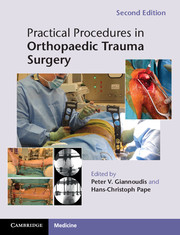Book contents
- Frontmatter
- Dedication
- Contents
- List of Contributors
- Preface
- Acknowledgements
- Part 1 Shoulder girdle
- Part 2 Upper extremity
- 3 Section I: Fractures of the proximal humerus
- 4 Section I: Fractures around the elbow
- 5 Section I: Fractures of the proximal radius
- 6 Fractures of the wrist
- 7 Section I: Fractures of the first metacarpal
- Part 3 Pelvis and acetabulum
- Part 4 Lower extremity
- Part 5 Spine
- Part 6 Tendon injuries
- Part 7 Compartments
- Index
5 - Section I: Fractures of the proximal radius
Published online by Cambridge University Press: 05 February 2014
- Frontmatter
- Dedication
- Contents
- List of Contributors
- Preface
- Acknowledgements
- Part 1 Shoulder girdle
- Part 2 Upper extremity
- 3 Section I: Fractures of the proximal humerus
- 4 Section I: Fractures around the elbow
- 5 Section I: Fractures of the proximal radius
- 6 Fractures of the wrist
- 7 Section I: Fractures of the first metacarpal
- Part 3 Pelvis and acetabulum
- Part 4 Lower extremity
- Part 5 Spine
- Part 6 Tendon injuries
- Part 7 Compartments
- Index
Summary
Indications
Non-displaced and minimally displaced radial head fractures can be treated with a sling or splint followed by early motion exercises of the elbow to prevent stiffness.
Partial (Mason type II) fractures of the radial head are amenable to operative fixation.
Fractures involving the entire radial head (Mason type III or IV) are best treated with excision and eventually prosthetic replacement.
Clinical assessment
Tenderness over the radial head.
Assess and document neurovascular status.
Careful examination of ligament stability, including the wrist and forearm, is mandatory to rule out elbow dislocations and Essex-Lopresti lesions.
Radiological assessment
Plain radiographs taken in orthogonal planes with the addition of oblique views (Fig. 5.1.1).
CT is helpful to assess the exact fracture geometry. In children or in unclear situations (e.g. previous injury), the contralateral side should be evaluated.
Preoperative consent
Obtain informed consent from the patient, including but not limited to risks, beneits, alternatives, complications and potential outcome.
Operative treatment
The World Health Organization (WHO) Surgical Safety Checklist should be used in the operating room.
- Type
- Chapter
- Information
- Practical Procedures in Orthopaedic Trauma Surgery , pp. 116 - 121Publisher: Cambridge University PressPrint publication year: 2014



